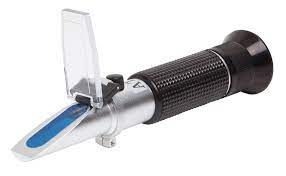It's always been said/known that hydrometers were not impacted by alcohol being present.
What has always been said/known is not always correct. The presence of alcohol lowers the specific gravity in a water/ethanol mixture. Not nearly as its presence increases the refractive index, but it does affect the reading. At around 15% abv, the SG is dropped around 0.005. If your FG readings are all in the range of 5-8% abv, the drop is going to be about half that, and it will be nearly constant. Since it is a small effect, the easiest thing to do is ignore it with hydrometer readings. With refractometer readings, the effect is much more pronounced.
Hydrometers readings are definitely affected by the presense of alcohol, which is less dense than water. But we don't adjust hydrometer FG readings before using them, because the standard beer ABV formulae that use OG and FG take that into account in their constants.
I do not believe this is correct. The standard ABV formula, (OG - FG) X 131.25, is a simplistic approach that assumes the OG - FG factor equates to the percentage of sugar turned into alcohol. It is making an assumption that the FG taken by the hydrometer is an accurate measure of the sugar content, which it cannot be if there is alcohol present since the alcohol affects the reading. Another source of error comes from the fact that the equation is determining the weight percent alcohol (ABW), then converting that to volume percent alcohol (ABV), all with that 131.25 constant. This is assuming a linear relationship between ABW and ABV. It is well known that this relationship is not linear, but over the ranges used in beers, the error is also small.
These small errors are simply ignored with the hydrometer, since they are fairly constant and small errors. For Homebrewing, it really doesn't matter.
So, a post like:
both refractometers and hydrometers are not accurate re final gravity due to presence of alcohol...
is factually correct. The are presence of alcohol affects both. However, the hydrometer that reads specific gravity will accurately read the specific gravity, even in the presence of alcohol. The inaccuracy
bobtheUKbrewer2 is talking about is using the FG reading as a measure of the sugar content.
The issue with the refractometer that needs to be understood to avoid confusion is that they measure the refractive index, but give a reading in Brix. That is, if you get a reading of 12 Brix with a refractometer, what the instrument is actually telling you is that the refractive index of the sample is the same as the refractive index of a 12% sucrose solution in water. It's the same with the SG readings from the refractometer (for those units that have that scale). If you get a reading of 1.048 with the refractometer, what it is telling you is that the refractive index of the sample is the same as the refractive index of a sucrose/water solution that has a SG of 1.048.
The refractometer is a great instrument, but it does introduce errors. The hydrometer does as well, but those introduced by the refractometer are so great that ignoring them leads to meaningless results, so they have to be corrected for (Wort Correction Factor - WCF, needing the OG to determine the FG when using a refractometer on fermented product). Even with correction, the errors with the refractometer is greater than those with the hydrometer, but for me and my brewing, the refractometer gets close enough much quicker, easier, and with a smaller sample. Furthermore, I have never broken a refractometer.









































![Craft A Brew - Safale S-04 Dry Yeast - Fermentis - English Ale Dry Yeast - For English and American Ales and Hard Apple Ciders - Ingredients for Home Brewing - Beer Making Supplies - [1 Pack]](https://m.media-amazon.com/images/I/41fVGNh6JfL._SL500_.jpg)

















